Pet Hair Maintenance: Expert Tips from a Cleaning Service
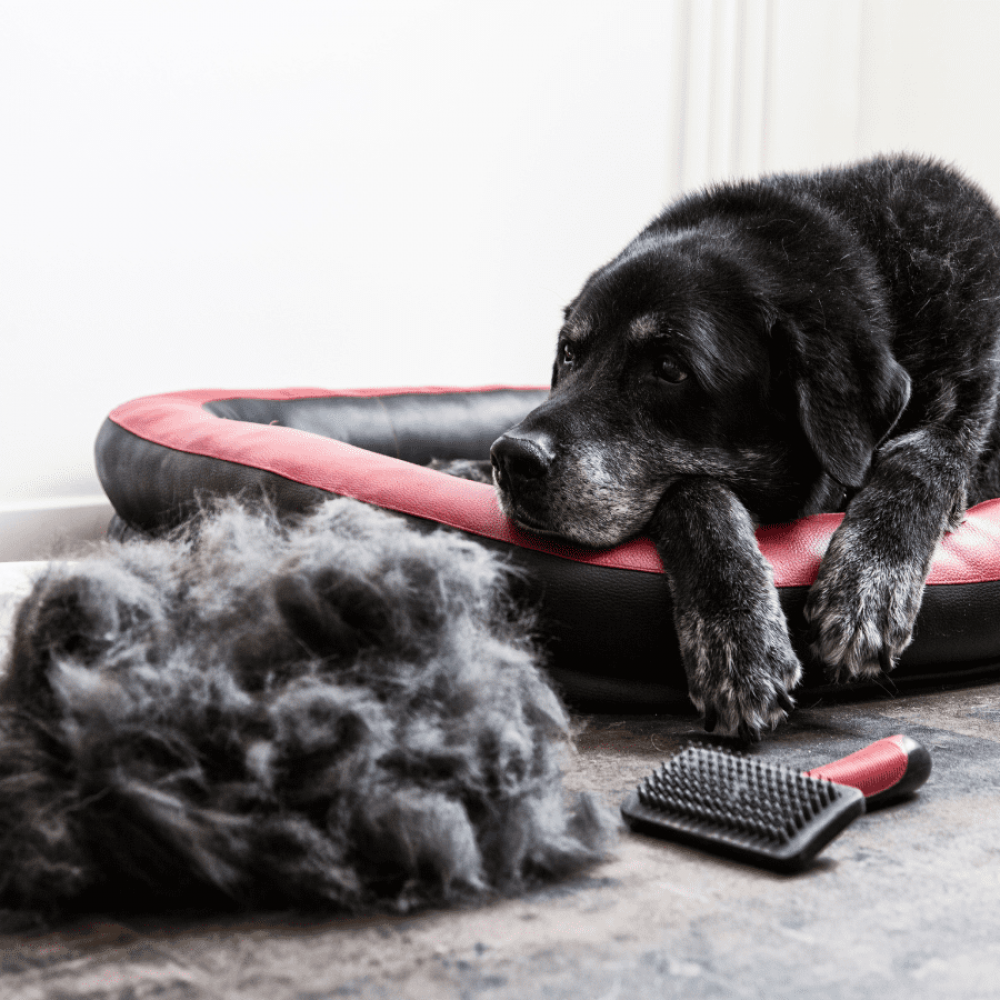
Introduction
Pets bring joy and companionship to our lives, but they can also bring a lot of pet hair into our homes. Dealing with pet hair can be a challenge, especially when it seems to accumulate everywhere from furniture to carpets to clothes. However, with the right tips and strategies, you can effectively manage and maintain a clean home even with pets. In this blog, we will share expert tips for pet hair maintenance at home, covering everything from understanding pet hair and its impact on your home to daily routines and deep cleaning strategies. Whether you have dogs, cats, or other furry friends, these tips will help you keep your house clean and free of dog hair while still enjoying the unconditional love of your pets. So, let’s dive in and discover how you can maintain a clean and comfortable home while dealing with the less cute aspects of pet ownership.
Understanding Pet Hair and Its Impact on Your Home
Pet hair, pet dander, and allergens are common concerns for pet owners. These particles can cause allergies in some people and these allergens can become airborne and settle on surfaces in your home, leading to respiratory issues and allergic reactions. It’s important to understand how pet hair affects your home so that you can take effective measures to manage it.
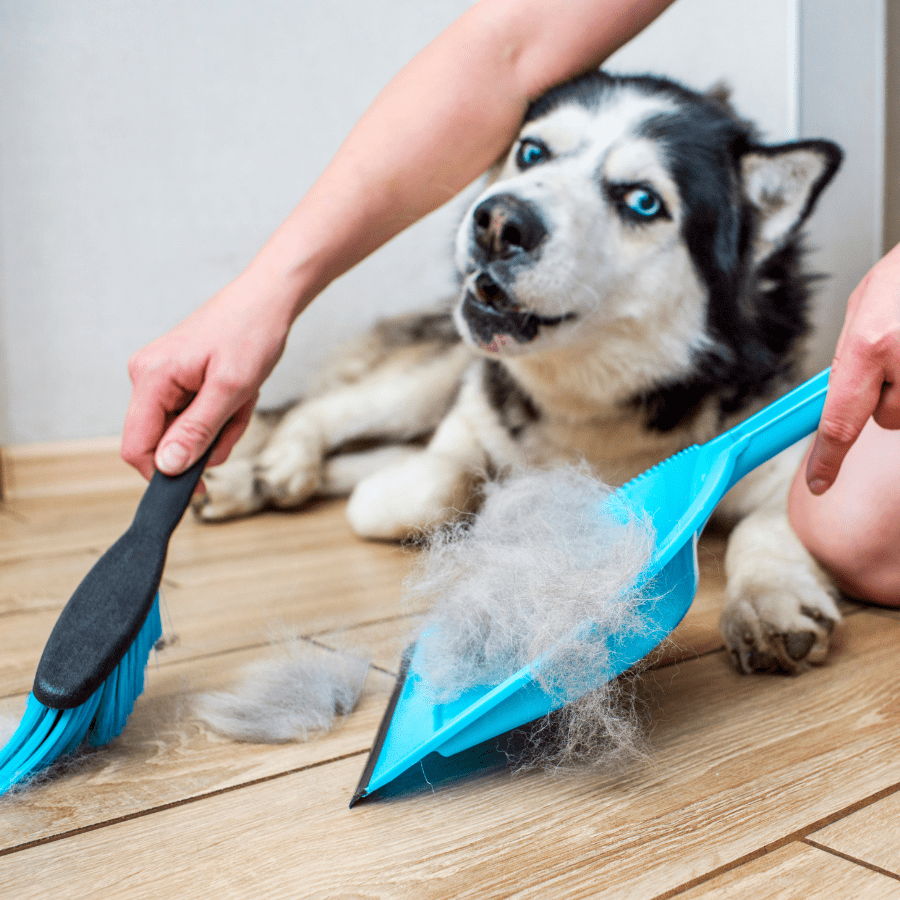
The Science Behind Shedding: Why Pets Lose Hair
Shedding is a natural process in which pets lose old or damaged hair to make way for new growth. The amount of shedding varies among different breeds and can be influenced by factors such as age, health, and seasons. The primary reason behind shedding is the hair growth cycle, which consists of three phases: anagen (growth phase), catagen (transition phase), and telogen (resting phase). During the telogen phase, old hairs are pushed out by new hairs, resulting in shedding. Regular grooming and a healthy diet can help minimize shedding, but it’s important to accept that some level of shedding is normal for most pets.
Identifying High-Shedding vs. Low-Shedding Breeds
When choosing a pet, it’s helpful to consider the shedding level of different breeds. Some breeds, like Labrador Retrievers and German Shepherds, are known for their high shedding, while others, like Poodles and Bichon Frises, are considered low-shedding or non-shedding. However, it’s important to note that even low-shedding breeds still produce some amount of hair and dander. Additionally, individual pets within a breed may vary in their shedding patterns. If you have allergies or prefer a cleaner home, you may want to consider a low-shedding breed or a hypoallergenic pet. Regular grooming, including brushing and bathing, can help manage shedding regardless of the breed.
Preparing Your Home for Effective Hair Management
To effectively manage pet hair in your home, it’s important to prepare and equip yourself with the right supplies. Cleaning products specifically designed to tackle pet hair, such as lint rollers and hepa filters, can be highly effective in removing hair from surfaces. Microfiber cloths and mops are also great for capturing and trapping pet hair. In addition to cleaning supplies, creating pet-friendly cleaning stations around the house can make the cleaning process more convenient and efficient. These stations can include items like towels, brushes, and vacuum cleaners, making it easier to tackle pet hair as it accumulates.

Essential Supplies Every Pet Owner Needs
Having the right supplies is essential for effective pet hair maintenance. Here are some must-have items for pet owners:
- Lint roller: Perfect for removing hair from clothing, furniture, and other surfaces. There are great reusable options as well.
- HEPA filters: Help capture pet dander and other allergens, improving air quality in your home. Opt for a vacuumwith one included or a small space air filter.
- Microfiber cloths: These cloths attract and trap pet hair, making them ideal for wiping down surfaces.
- A vacuum cleaner with pet-specific attachments: Look for a vacuum cleaner that is designed to tackle pet hair and dander.
- Pet-friendly cleaning products: Choose cleaning products that are safe for pets and effective in removing pet messes.
Setting Up Pet-Friendly Cleaning Stations Around the House
Creating pet-friendly cleaning stations in your home can help you stay on top of pet hair maintenance. These stations can be set up in key areas where pet hair tends to accumulate, such as near the entrance, living room, and bedrooms. Each station should include essential cleaning supplies, such as lint rollers, microfiber cloths, and pet-friendly cleaning products. Having these supplies readily available will make it easier to clean up pet hair as it accumulates. Additionally, consider placing pet-safe cleaning wipes or sprays near your pet’s feeding and sleeping areas to quickly clean up any messes or odors. In my home, we have these spaces hidden in plain sight by placing these items in large decorative vases/bowls. When you can make the task easier you are more likely to do it in the moment. These pet-friendly cleaning stations will help you maintain a clean and pet-friendly environment every day.
Daily Routines to Minimize Pet Hair Accumulation
Incorporating daily routines into your pet care regimen can help minimize the accumulation of pet hair in your home. Regular grooming is key to managing shedding and preventing excess hair from ending up on your furniture and floors. Brushing your pet’s coat daily helps remove loose hair and prevents it from being shed throughout your home. There are many different kinds of brushes that are great depending on your pet’s breed. Many groomers offer de-shedding services as well that can help decrease buildup. Bathing your pet regularly can also help remove loose hair and reduce dander. Additionally, establishing a cleaning process that includes regular vacuuming, dusting, and wiping down surfaces will help keep pet hair under control. Depending on your needs, a quick vacuuming every other day can often be more helpful than a deep clean once a week.
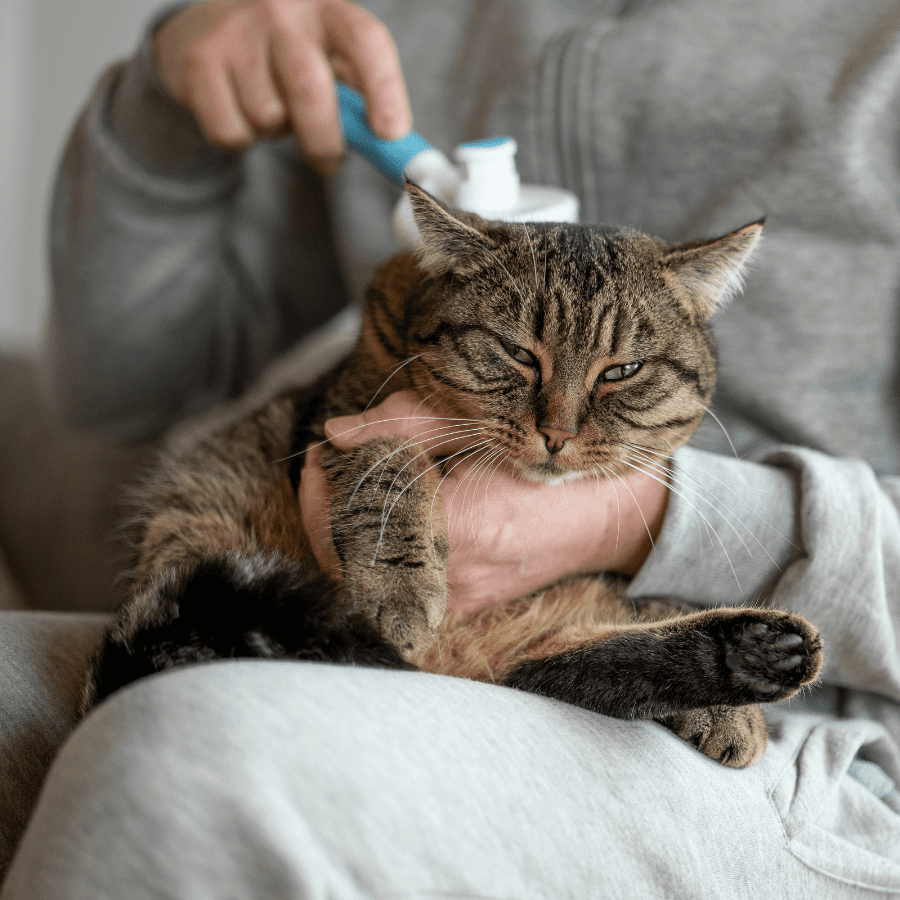
Innovative Brushing Techniques for Less Shedding
In addition to regular grooming, there are some innovative brushing techniques you can try to minimize shedding. One technique is the of a de-shedding tool, which helps remove loose hair from your pet’s undercoat. These tools have specially designed blades that gently remove excess hair without damaging the topcoat. Another technique is the use of a slicker brush, which is especially effective for removing tangles and mats. Finally, consider using a grooming glove or mitt, which allows you to pet your pet while simultaneously removing loose hair. Experiment with different brushing techniques to find what works best for your pet and helps reduce shedding.
Deep Cleaning Strategies for Pet Owners
While daily routines can help manage pet hair, deep cleaning is also necessary to maintain a clean and healthy living environment. Periodically deep cleaning your home, including furniture and carpets, helps remove embedded pet hair and dander. Professional residential cleaning services, like Better Life Maids, can be a great option for deep cleaning, as they have the expertise and specialized equipment to effectively remove pet hair and odors. However, there are also DIY solutions you can try to remove pet hair from furniture and carpets. Let’s explore some of these deep cleaning strategies in more detail.

DIY Solutions for Removing Pet Hair from Furniture and Carpets
Removing pet hair from furniture and carpets can be challenging, but there are some DIY solutions you can try. Here are a few methods that can help:
- Use a rubber glove: Dampen a rubber glove and run your hand over the furniture or carpet in a sweeping motion to attract and collect pet hair.
- Use a damp sponge or cloth: Dampen a sponge or cloth and wipe it over the furniture or carpet to pick up pet hair. Rinse and wring out the sponge or cloth as needed.
- Use a fabric softener sheet: Rub a fabric softener sheet over the furniture or carpet to help loosen and attract pet hair.
- Use a pet hair remover brush: Invest in a pet hair remover brush specifically designed to remove pet hair from furniture and carpets. Follow the instructions provided with the brush for best results.
Tips to Deal with Pet Hair on Furniture and Other Surfaces
In addition to DIY solutions, there are some tips and tricks you can try to deal with pet hair on furniture and other surfaces. Here are a few suggestions:
- Use slipcovers or throws: Covering your furniture with slipcovers or throws can help protect them from pet hair and make cleaning easier. Simply remove and wash the slipcovers or throws as needed.
- Vacuum regularly: Invest in a vacuum cleaner with pet hair attachments and vacuum your furniture and other surfaces regularly to remove pet hair.
- Use pet-friendly cleaning products: When cleaning your furniture and other surfaces, use cleaning products that are safe for pets and won’t leave residues or harm your pets.
- Use a lint roller or tape: Keep a lint roller or roll of tape handy to quickly remove pet hair from clothing, upholstery, and other surfaces. I love keeping a mini version in my bag for regular use.
Preventative Measures to Keep Your House Clean
To keep your house clean and minimize pet hair accumulation, it’s important to take preventative measures. By implementing these measures, you can create a clean and pet-friendly environment in your home. This includes making flooring and furniture choices that are suitable for homes with pets, as well as creating a pet-friendly yet stylish living space. Additionally, keeping up with regular grooming, establishing cleaning routines, and using preventative measures during allergy season can help keep your house clean and reduce the impact of pet hair.
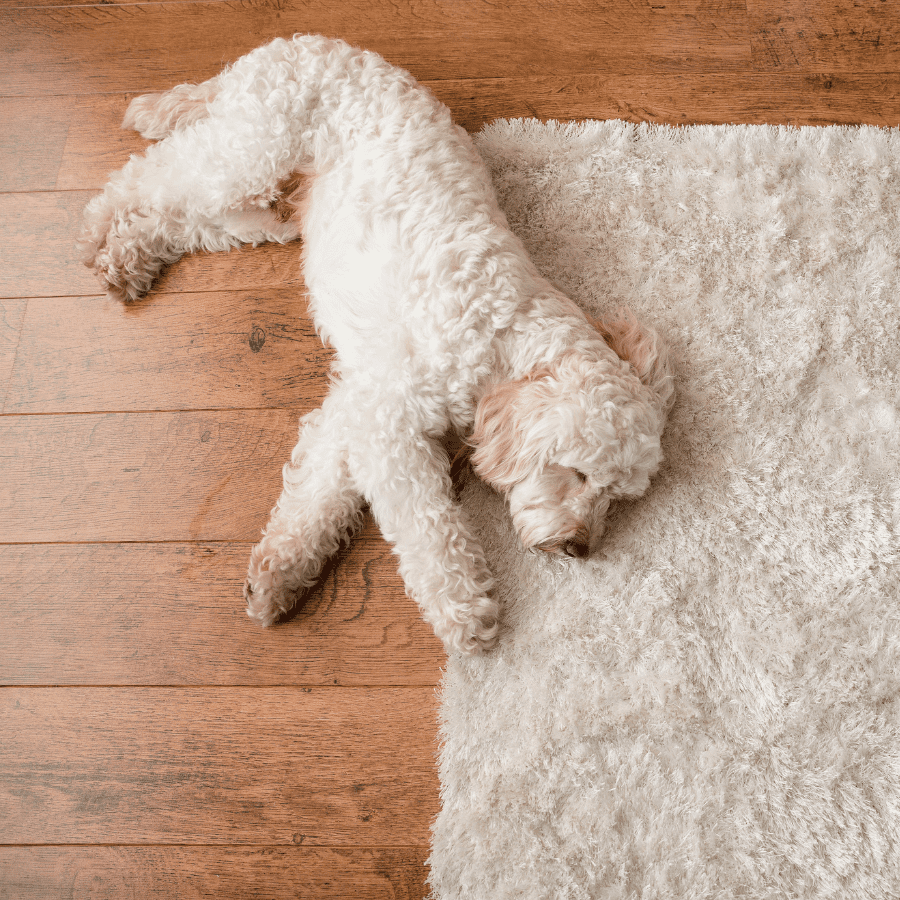
Flooring and Furniture Choices for Homes with Pets
Choosing the right flooring and furniture can make a big difference in managing pet hair in your home. Here are some considerations:
- Flooring: Opt for hard flooring surfaces, such as hardwood, laminate, or tile, which are easier to clean and don’t trap pet hair as much as carpet. If you prefer carpet, choose low-pile options that are easier to vacuum and clean.
- Furniture: Consider furniture with removable and washable covers or materials that are resistant to pet hair, such as leather or microfiber. Avoid materials that attract pet hair and are difficult to clean, like chunky weaves or silk.
- Area rugs: Use area rugs that can be easily cleaned or shaken out to prevent pet hair from settling on your flooring. Consider rugs with patterns or colors that are less prone to showing pet hair.
Creating a Pet-Friendly Yet Stylish Living Space
Having pets doesn’t mean you have to compromise on style. With some thoughtful design choices, you can create a pet-friendly yet stylish living space. Here are a few ideas:
- Choose pet-friendly fabrics: Opt for fabrics that are durable and stain-resistant, such as microfiber or performance fabrics.
- Incorporate pet-friendly furniture: Look for furniture with built-in pet-friendly features, such as scratch-resistant surfaces or hidden pet beds.
- Create designated pet areas: Designate specific areas for your pets, such as a cozy corner with a pet bed, crate, or a built-in feeding station.
- Use stylish storage solutions: Invest in decorative storage baskets or bins to keep your pet’s toys and accessories organized and out of sight.
- Incorporate pet-friendly artwork: Display artwork or photographs of your pets to add a personal touch to your space.
- Use attractive treats and toys: Opt for toys that look more attractive so when they are left on the floor, they are less of an eye sore.
- Match with your pet: Choose colors that blend with your pet’s fur. This will help minimize the appearance of their fur on rugs and upholstered surfaces.
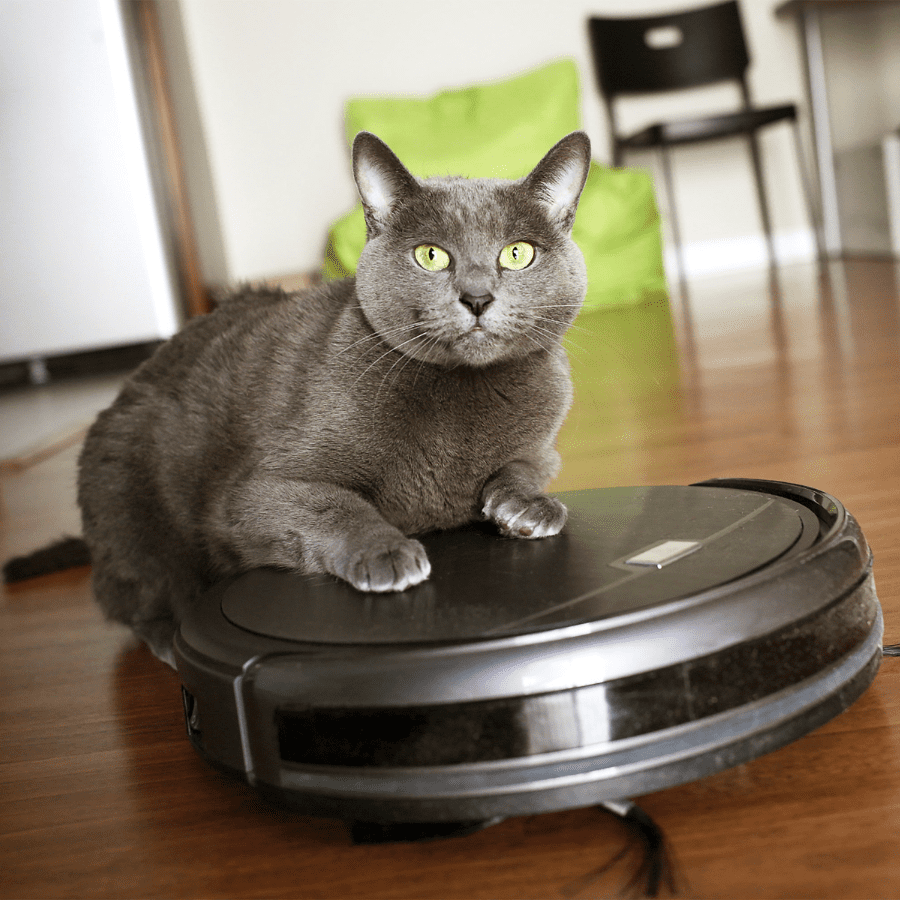
Conclusion
Maintaining a pet-friendly home involves more than just love and care. Understanding the nuances of pet hair shedding and implementing effective strategies can make a significant difference. By incorporating daily routines, grooming techniques, and deep cleaning strategies, you can minimize pet hair accumulation and keep your living space clean and fresh. Additionally, choosing pet-friendly flooring and furniture options, creating designated cleaning stations, and investing in air purifiers can contribute to a healthier environment for both you and your furry companion. For personalized solutions and expert advice, consider calling Better Life Maids to help you achieve a harmonious balance between pet ownership and home maintenance.
Frequently Asked Questions
How often should I groom my pet to reduce shedding?
Regular grooming is key to reducing shedding. The frequency of grooming depends on the breed and length of your pet’s coat. Generally, dogs should be groomed at least once a week, while cats may need grooming every few weeks.
Are there any pet breeds that don’t shed?
Yes, there are some pet breeds that are considered low-shedding or non-shedding. These breeds include Poodles, Bichon Frises, and Yorkshire Terriers. However, it’s important to note that even these breeds may still produce some amount of hair and dander.
Can you have a cleaner if you have a dog?
Yes, you can have a cleaner even if you have a dog. It’s important to communicate your pet’s presence to the cleaner and ensure that they are comfortable working in a home with pets. Additionally, make sure to prioritize your pet’s safety during the cleaning process, this often includes leaving your pet in a secure designated space while the cleaning technician moves freely through the home.
Are all cleaning products safe for pets?
Not all cleaning products are safe for pets. Some cleaning products contain chemicals that can be harmful to pets if ingested or if they come into contact with their skin. It’s important to choose pet-safe cleaning products that are non-toxic and won’t harm your pets. Better Life Maids ONLY uses products that are safe of you and your four legged friends.